Report / Yerevan
Home advantage
Isolated and challenged financially, Armenia faces a set of problems common to many post-Soviet nations. But in the capital of Yerevan, a new generation of tech-savvy entrepreneurs is forging exciting links with the outside world.
It’s dusk in Yerevan’s Republic Square and its quadrangle of government ministries glows pink, rather like a Soviet-era Petra. Much of Armenia’s capital is built from rose-coloured tuff, a local volcanic stone used to clad factories and high-rise apartment blocks, each one etched with socialist-realist reliefs.
While the architecture is clearly Eastern Bloc in flavour, the city of about a million residents is dominated by powerful Armenian symbols. On a hill overlooking the city where a statue of Stalin once stood, the copper figure of Mother Armenia clutches a sabre. An eighth-century Armenian hero, Davit of Sassoun, guards the main railway station. Surveying it all on a clear day, Yerevan’s citizens can see the snowy peaks of Mount Ararat (the sacred mountain where Noah found refuge during the flood) glistening in the Caucasian sun.
Armenia is more than just a lower-middle-income Eurasian nation state: it is a homeland. While there are three million inhabitants there is a seven-million strong Armenian diaspora, referred to as the spyurk (the spread), residing in locations as diverse as Los Angeles and Sydney. Their money and influence is increasingly felt, from the new diaspora-funded stone-church restoration projects in the city to the beginnings of a tourist industry in the countryside, especially in spa towns such as Dilijan. Downtown Yerevan has an international, cosmopolitan scope. “I was born in Beirut but left for Paris in the 1970s,” says one impeccably groomed French-Armenian architect monocle meets over breakfast. “We’re here visiting with the benevolent fund – we’re being good Armenians.”
Armenia has had a scattered diaspora since antiquity but many of these modern spyurk are second and third-generation Ottoman Armenians, survivors of what most historians consider one of the first genocides of the 20th century. From 1915, as the Ottoman Empire faltered, approximately 1.5 million Armenians were killed or deported by Ottoman forces in what has been described as a collective punishment for Armenian nationalists siding with Russia in the hope of establishing a homeland in eastern Turkey. Many lost their lives on forced marches to the Syrian deserts without food and water.
In Yerevan, most families have a story of survival. The events of 1915 permeate national identity, from the food to the music. “This dish is made from chicken and a wheat called korkot; it was eaten on Mousa Dagh mountain by a group of Armenians under siege,” says Davit Muradyan, a journalist who hosts our team for lunch in a stone-tuff-clad Soviet-era flat. “French warships noticed their huge banner tied to a tree saying ‘Christians in Distress. Rescue’ and took Armenians to Port Said, Egypt. Every time we eat it we remember them.”
The events of 1915 have come to define modern-day Armenia – in part because their neighbour, Turkey, has repeatedly rejected the term genocide, insisting instead that the massacres were fewer in number and part of the turmoil of the First World War. In fact the very word “genocide” has been prohibited; it is considered an “insult to Turkishness”. The historiography of the period has powerful political consequences, especially as Armenia commemorates the centenary of the genocide this year. As monocle arrives in early spring everyone from shopkeepers to chess grandmasters and government minsters is wearing a forget-me-not pin on their lapel. “It means ‘We remember and we demand’,” says one manager we meet at a Yerevan brandy factory.
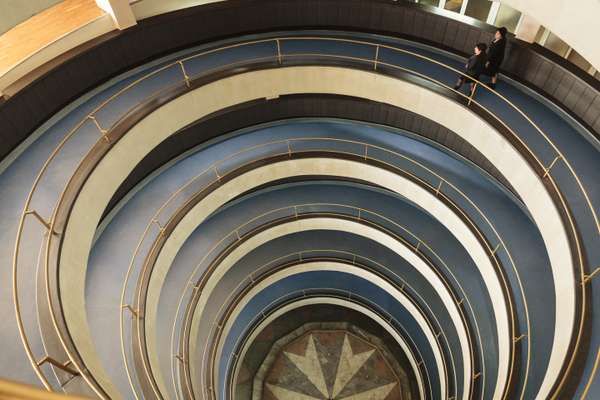


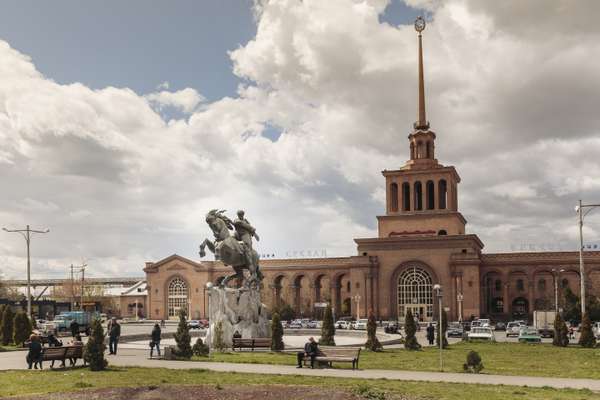
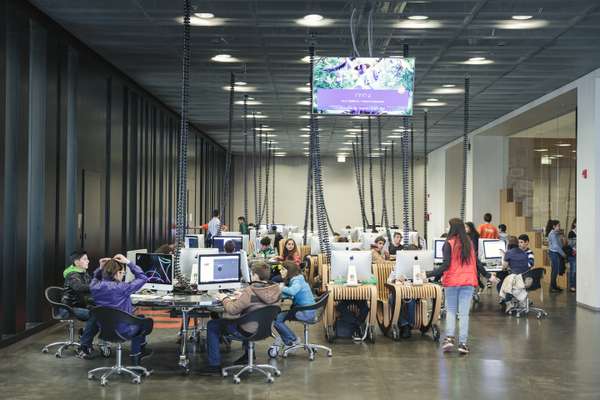
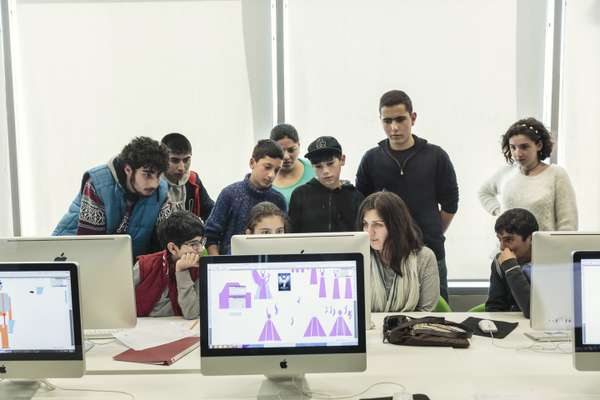


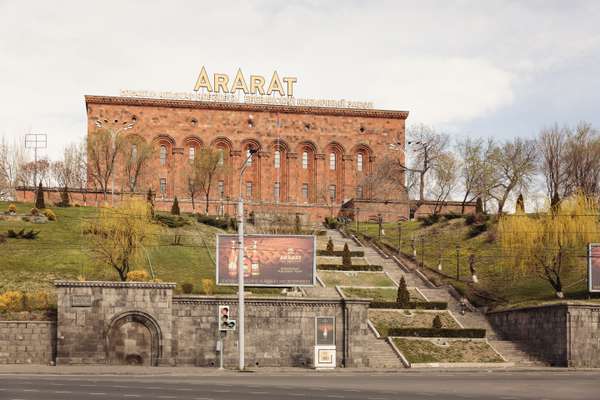
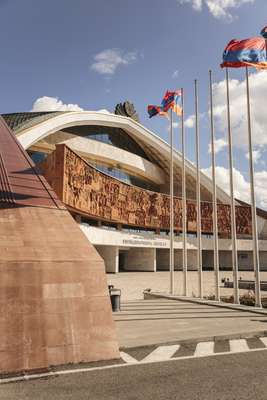
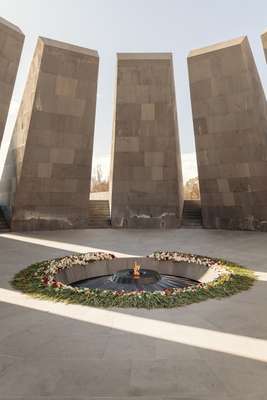
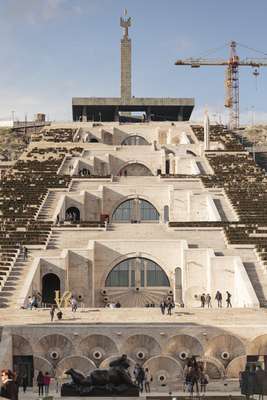
This sense of injustice is heightened by Armenia’s isolation: the country is under blockade from two of its neighbours. Both Azerbaijan and Turkey sealed their borders in the early 1990s after Armenia went to war with Azerbaijan in the Nagorno-Karabakh region, a contested territory making a pro-Armenian bid for secession. Skirmishes still take place along the Azeri/Armenian frontier.
Though Armenia was the de facto winner of the conflict, trade has suffered. A pot-holed winding route to Georgia’s port of Poti is the only land route west for cargo trucks. “It’s tough. Closed borders make exports and imports expensive,” says Gegham Petrosyan, executive director of the government-backed National Center for sme Development, as he describes his plan to bolster food-processing businesses and reinvigorate light industry. “We’re a small market but we’re entrepreneurial in nature. I believe Armenia can be self-sufficient.”
For all the talk of new enterprise, Armenia’s economy faces challenges on many fronts. It has been driven into the arms of its old master: Moscow. While Russia remains the chief market for merchandise – from diamonds to raw metal and mineral water – Armenia’s close ties have left it vulnerable to recent shockwaves in the Great Bear’s economy: as the rouble plummeted in 2014, so did the dram. Meanwhile, food prices went up. “We’re in a crisis,” says professor of economics and former prime minister Hrant Bagratyan, who meets monocle on a leafy street in downtown Yerevan to explain Armenia’s macroeconomic woes. “Remittances from [Armenians in Russia, Germany and the US] have been drawing up the currency and reducing our ability to export competitively. We should have invested them while we could to protect ourselves. Now remittances from Russia are falling; this presents a new challenge.”
Armenia’s relationship with Moscow has a profound impact on the country’s long-term future. This January, under severe pressure from the Kremlin, the country joined the Russian-controlled Eurasian Economic Union (eeu), a move that forced it to give up its Association Agreement with the EU. Meanwhile the Armenian president Serzh Sargsyan made a Russia-like move, starting a bid to reform the constitution to his own ends and launching an investigation into Armenia’s principled opposition leader’s tax interests.
“My deepest concern is that Russia has played a negative role in Armenian history,” says Anahit Bakhshyan, a teacher, opposition figure and member of Yerevan city council who sits in her office with tears welling in her eyes at the thought of her struggling homeland. “I blame the government for convincing the public that there is no way without Russia. Any breach of our sovereignty will be a great sadness to me.”
The country hasn’t escaped the malaise of many post-Soviet states; an oligarchy exists. It’s clear from the cars – expensive Mercedes 4x4s and clapped-out Ladas – who are the haves and have-nots. Many we meet describe Armenia as a “half-democracy.” Despite this, Bakhshyan thinks the country will undergo changes as its young people, tooled up with technological know-how and liberal ideals, come of age. “We’ve had civil education in our public schools since the early 1990s,” she says. “This generation knows the value of its own voice, they know they can effect change.”
There was a time when the government could demolish a heritage building or pull up the trams overnight but Bakhshyan sees a more assertive, civic-minded generation holding the ruling powers to account with physical protests and, importantly, online. “The government brings each decision onto the internet; every Wednesday they post the parliament’s agenda online,” says Bakhshyan. “There is a debate on blogs, on social media. The government cannot hide anything.”
Perhaps surprisingly, Armenia is technologically connected. Wi-fi is available for free on public buses and in parks. It’s whippet fast. This – and the Armenian propensity for education in science and advanced mathematics – is fuelling a tech-industry boom. While many of Armenia’s sectors suffered badly last year, the technology sector expanded by 25 per cent in 2014. The country’s 400 technology-related firms totalled nearly $475m (€430m). “Two months ago we got an investment of $10m [€9m] from a venture-capital fund,” says Artavazd Mehrabyan, co-founder of Picsart, a platform for artists to share their work. Around him 120 workers, including designers, programmers and product developers, sit in a large warehouse-style office. Picsart has 60 million active users. “Our HQ is now San Francisco but we’re an Armenian company. We’re not alone; we’re finding more start-ups emerging from Yerevan’s tech community.”
Technology has given Armenians the power to export their services online; rather like India, companies are outsourcing computer-programming work, taking advantage of Yerevan’s high skills and cheap labour. But increasingly Armenia’s educated and original tech community is attracting the interest of big investors. Microsoft Corporation established an innovation centre in Yerevan and the government is starting to put its weight behind the sector. “We have huge scientific and industrial heritage and acumen,” says Armen Ashotyan, the minister for education and science who speaks to us from behind his desk in a stone Soviet-era building in downtown Yerevan.
The minister admits it’s difficult to keep talented Armenians in the country, especially with such an engaged diaspora drawing clever Armenians into positions abroad. “The brain drain is a disaster for us,” he says. “But we’re trying to build up our networks and use the diaspora to create a hub for educational excellence. It’s often impossible to keep the really good people here all the time.”
Yet some of Armenia’s talented spyurk are moving back to Yerevan permanently. Marie Lou Papazian is an Egyptian-born Armenian who was raised in Lebanon before emigrating to LA via Barcelona. She and her husband settled in Yerevan eight years ago when they realised their four children weren’t quite “Armenian enough”. “We’ve found a quality of life here we never had in LA,” she says.
Today Marie Lou Papazian is director of the Tumo Center of Technologies, an impressive $20m (€18m) after-school project funded by Dallas-based Armenian couple Sam and Sylva Simonian. Tumo is a vision of what Armenia could one day look like: on the ground floor there is a sea of 400 Apple Mac screens where young people sit in tutorials on everything from design to programming. Elsewhere teenagers compose and edit Armenian rock music in state-of-the-art studios assisted by music producers taking a sabbatical from Los Angles.
“This centre is about giving these children the skills to innovate; they can take what they learn into the business world,” says 28-year-old programme developer Hayk Galstyan, a Yerevan-born Indian-Armenian who was brought up in west London. “I moved here after working for Sega. I always imagined I’d come back. And I think I’ll stay.”


